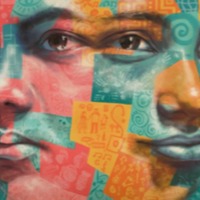
Antonella
There are an estimated 55,000 people living in modern slavery in Argentina (GSI 2018). Argentine women and children are subjected to sex trafficking within the country, as are women and children from other Latin American countries, particularly Dominican Republic, Paraguay, Bolivia, Uruguay, and Brazil. To a more limited extent, Argentine men, women, and children are subjected to sex and labour trafficking in other countries, mostly in Europe. Men, women, and children from Argentina, Bolivia, Paraguay, Peru, and other countries are subjected to forced labour in a variety of sectors, including sweatshops, agriculture, street vending, charcoal and brick production, domestic work, and small businesses. Antonella was fourteen years old when she decided to cross the border between Bolivia and Argentina. She was forced to live and work in the Bolivian City Potosi for three months.
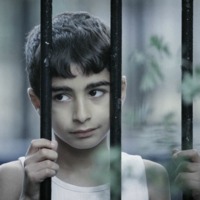
The Letter
The lesson is based around a true story about Nicu, a 9-year-old boy who has been trafficked to the UK. The central focus is a beautiful short film, based on the true narrative, in which Nicu reads an imaginary letter to his mother. Sadly, his descriptions of wealth are far removed from the reality of the violence and exploitation he is subjected to. This is not the ‘better life’ that his parents were promised he would have. He is unhappy, alone, and trapped. The lesson finishes with an engaging music video that focuses on the exploitation of a trafficked child forced to work in a factory.Audio for this lesson plan can be found at https://youtu.be/09QE3RsAge8
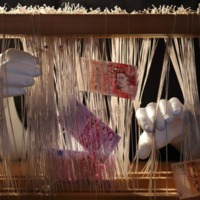
Carpet of Dreams
This lesson examines the use of forced child labour i.e. slavery, in the handmade carpet industry. The initial focus is a true life narrative told by Ravi, who was forced to weave handmade carpets for up to 14 hours a day, starved and not paid. Follow-up videos include an excerpt from the acceptance speech of Kailash Satyarthi, Nobel Peace Laureate, 2014 and an authentic TV interview with a global anti-trafficking academic, Siddharth Kara, who addresses the role of the corporate world and consumer choice. The Good News looks at powerful actions that are being taken to eliminate forced child labour. The teaching material also addresses how we, as consumers of products that may contain forced (child) labour, can use our buying power to send a message to manufacturers in order to effect change.Audio for this lesson plan can be found at https://youtu.be/XupzUpXspDg

Gold Costs More Than Money
This lesson examines the use of forced labour i.e. slavery, in gold mining. It includes a gentle but confronting narrative, a surreal short film by young filmmakers and an audio recording of an engaged couple’s argument. The teaching material also addresses how we, as consumers of products that include gold, such as smart electronics and gold jewellery, can use our buying power to send a message to manufacturers in order to effect change.There are two 55-minute lessons, depending on the level of your students, it is aimed at older teens, young adults and adults, B1+ (upper intermediate to advanced)Materials include The young man on the train (narrative), student worksheet, autonomous learning resources, audio recording, transcript, information about human trafficking and modern slavery, slides, real-life interview with a businessowner, Teacher’s Guide. Audio for this lesson plan can be found at https://youtu.be/Dv53eoT94JA

Cocoa Truth
This lesson examines the use of forced labour, including forced child labour, in the cocoa industry. The content specifically focuses on the exploitation of children in the Ivory Coast. The lesson also addresses how we, as consumers of cocoa-based products, in particular chocolate, can use our buying power to influence chocolate companies.There are two 55-minute lessons, depending on the level of your students, and is aimed at older teens, young adults and adults B1+ (upper intermediate to advanced)Materials include Peter’s story, information about slavery in the cocoa industry, real-life interview with the Director of a shelter for trafficked children, student worksheet, autonomous learning resources, slides, audio recording of Peter’s narrative, Teacher’s Guide. Audio for this lesson plan can be found at https://youtu.be/qLnUMjhZxuA
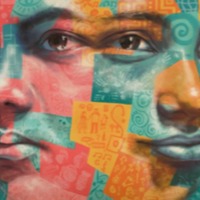
Sunita B
India has a population of more than 1.3 billion people, there are still at least 270 million people living on less than US$1.90 per day. While laws, systems and attitudes regarding key 'fault lines' such as the caste system, gender and feudalism are rapidly changing, social change of this depth and scale necessarily takes time. In this context, it is perhaps unsurprising that existing research suggests that all forms of modern slavery continue to exist in India, including intergenerational bonded labour, forced child labour, commercial sexual exploitation, forced begging, forced recruitment into nonstate armed groups and forced marriage. Sunita was 14 when she was forced to marry and move to live with her new husband. Sunita tells of her husband’s poor economic condition and how they have had to borrow money for events such as marriages and funerals. As a result, Sunita herself must work for daily wage labour and her son has had to leave school to work. However, Sunita tells of how their employers often withhold wages which means they have been unable to pay of their debts.
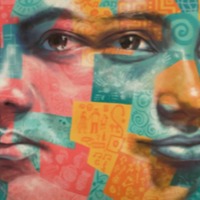
Yum
Men, women and children are victims of human trafficking for forced labour in the Thai fishing industry. Enslaved people are subjected to physical abuse, excessive and inhumane working hours, sleep and food deprivation, forced use of methamphetamines and long trips at sea confined to the vessel. Due to the fishing industry relying on trans-shipments at sea to reduce expenditure, some find themselves trapped on long-haul trawlers for years at a time. This makes the monitoring of enslaves labour on fishing vessels costly and difficult. The Thai Government has faced severe pressure to tackle forced labour specifically in the fishing sector, with the European Commission threatening a trade ban in 2015 for not taking sufficient measures to combat illegal and unregulated fishing that would cause the loss of up to US$1.4million a year in seafood exports. As a result the Government have reportedly accelerated efforts to combat labour exploitation, however despite this most workers in the Thai fishing sectors remain unregistered. Yum was in Cambodia looking for work when he decided to travel with friends to Thailand. On the way, they were met by a man who offered them work on his farm, which they accepted. They were forced to work long hours with no wages. After a month, the farmer fled and Yum was offered work on a construction site in Thailand. However, in Thailand Yum arrived not at a construction site but a sea port. It was only after days on a fishing vessel that he was told he had been sold. Subjected to months at sea with poor nutrition and daily beatings, Yum was finally able to escape one the boat reached Indonesian waters.
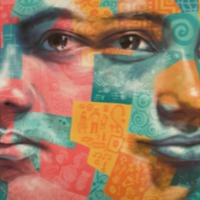
Young-Soon
The Democratic People’s Republic of Korea (North Korea) is a source country for men, women and children who are subjected to forced labour and sex trafficking. Government oppression in the country prompts many to flee the country in ways that make them vulnerable to human trafficking in destination countries, especially China. Within North Korea, forced labour is part of an established system of political repression. The government subjects its nationals to forced labour through mass mobilisations and in North Korean prison camps. There are an estimated 80 000 to 120 000 prisoners being held in political prison camps in remote areas of the country. Here men, women and children are subjected to unhygienic living conditions, beatings, torture, rape, lack of medical care and insufficient food. Many do not survive and furnaces and mass graves are used to dispose the bodies of those who die. Young Soon, along with her family, was forced into an internment camp in North Korea as a political prisoner. Forced to live in a cramped hut and fed only gruel, Young Soon worked long hours in a corn field. All members of her family either died of malnutrition or were killed. After nine years, Young-Soon was able to escape to South Korea.
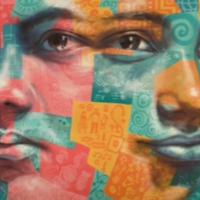
Oksana B
Forced labour accounts for 98 percent of cases of modern slavery in Russia. Made up of both Russian and foreign workers, particularly from Tajikistan, Uzbekistan, Azerbaijan and Kyrgyzstan, these people are enslaved in the agricultural and construction sectors, in factories, private homes, forestry, automotive and fishing industries. Russia also stands as the second largest migrant receiving country in the world, and remains one of the top 5 destinations for Ukrainians seeking work. These migrant workers often rely on underground networks and intermediaries, not knowing exactly what work they are committing to. Increased unemployment, poverty and demands for cheap labour among Russian citizens, along with the flow of cross-border migration has created new pockets of vulnerability and opportunities for labour exploitation in the country. Oksana, 46, was trafficked from Ukraine into forced labour in Russia
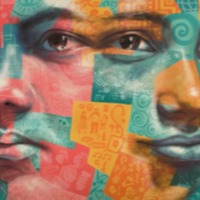
Nicoleta B
Despite having the lowest regional prevalence of modern slavery in the world, Europe remains a destination, and to a lesser extent, a source region for the exploitation of men, women and children in forced labour and commercial sexual exploitation. Trafficking for sexual exploitation is the most widespread for of modern slavery with an 84% of victims trafficked for this purpose. The majority of those trafficked for this purpose are women and young girls who often originate from Eastern Europe within the EU as well as Sub-Saharan Africa, with the majority of people being trafficked from Nigeria to various parts of Europe including Italy, France, Spain and the UK through an array of complex trafficking networks. Nicoleta, 34, Romanian survivor of forced labour and sexual slavery in Sicily.
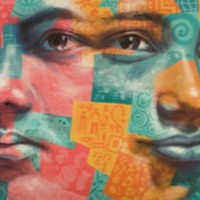
Nelson
Brazil is a source country for men and boys trafficked internally for forced labor which accounts for most instances of modern slavery in Brazil. It is particularly prevalent in manual labour sectors such as construction, manufacturing, factory and domestic work and occurs in rural and urban areas, mainly through debt bondage schemes. In rural areas workers are immobilised in estates until they can pay off debts often fraudulently incurred; their identity documents and work permits are frequently retained; they are often physically threatened and punished by armed guards and some have been killed while attempting to flee. Debt bondage involves abusive labour contracting schemes operated by contractors known locally as empreiteiros or gatos, often engaged in other types of seasonal labour contracts. Nelson, 46, was trapped with his family in forced labour on a coffee farm in Brazil.
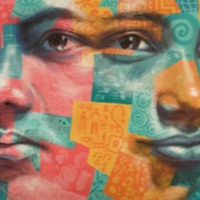
Ngor
Thousands of women and children were taken into slavery during the decades of Sudan’s civil war, mainly from Northern Bahr El Ghazal and the Nuba Mountains. Ngor was ‘redeemed’ (bought out of slavery) by Christian Solidarity International (CSI), a Zurich-based international human rights organization, in 1999. Slave-taking was revived in 1985 by the National Islamic government of Sudan primarily as a weapon against counterinsurgents in the South, and secondarily a way to reimburse its surrogate soldiers for neutralizing this threat. In 1989 the government created the Popular Defense Forces (PDF), militia trained to raid villages and take people as slaves. PDF recruits were allowed to keep whoever they captured, along with booty of grain and cattle. One study documents 12,000 abductions by name, while NGOs offer estimates ranging from 15,000 to 200,000. The slaves were often moved to large towns in the north on week-long journeys during which the women were repeatedly raped, and then sold to new masters who used them without pay for farming and sexual services. The peace process brought these PDF abductions to an end, but inter-tribal abductions continue in Southern Sudan. In addition, Sudanese children are used by rebel groups in the ongoing conflict in Darfur; Sudanese boys from the country’s eastern Rashaida tribe continue to be trafficked to the Middle East for use as camel jockeys; the rebel organization “Lord’s Resistance Army” has forcibly conscripted children in Southern Sudan for use as combatants in its war against Uganda; and the institution of chattel slavery continues in southern Darfur and southern Kordofan.Ngor was captured after Northern Sudanese soldiers invaded his village. He was given to a man called Mohammed and subjected to physical abuse.
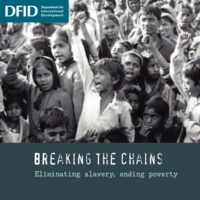
Breaking the Chains: Eliminating slavery, ending poverty
The official publication to mark the bicentenary from the Department for International Development, with a particular focus on the links between poverty and forms of modern slavery around the world.
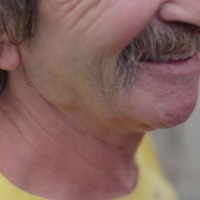
Edward
"Edward" was beaten, degraded and made to work long hours in forced labour in the UK. At one point he was sold by one man to another man for £300. He was removed from a situation of exploitation by the specialist investigators of the charity Hope for Justice. The British Government estimates that there are around 13,000 people in modern day slavery in the UK today. Over 3,000 people, including nearly 1,000 children, were referred to British authorities as potential victims of slavery in 2015, a 40% increase on the previous year. The most common countries of origin were from Albania, Nigeria and Vietnam.
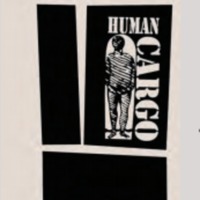
Human Cargo: The Transatlantic Slave Trade, its Abolition and Contemporary Legacies in Plymouth and Devon
Human Cargo was a partnership project between Plymouth City Museum and Art Gallery, and the Royal Albert Memorial Museum, Exeter. The project consisted of two main components. The first was a historical exhibition, which explored the development of the transatlantic slave trade and, in particular, the role of Plymouth as a port, the involvement of the City's dignitaries and the South West's links with the abolition movement. The second part was a contemporary art response to modern forms of slavery and historical legacies, including the flower picking trade, sweatshop labour and the Fair Trade Movement. This work was newly commissioned and included audio visual pieces, installations, hand-printed wallpaper and participatory objects. A variety of events and activities took place alongside the exhibition including education workshops, performances, African music and storytelling activities, and Elizabethan House re-enactment sessions.
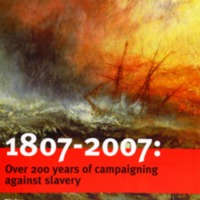
Anti-Slavery International, 2007
The world's oldest human rights organisation, Anti-Slavery International, led several initiatives in response to the bicentenary. The Fight for Freedom 1807-2007 Campaign, launched in 2005, called for measures to address the continuing legacies of the slave trade. The publication '1807-2007: Over 200 years of campaigning against slavery' looked back at the work of Anti-Slavery International and its predecessor organisations. The Spotlight on Slavery series of exhibitions and events included debates, lectures, film screenings and photography exhibitions. Anti-Slavery International also collaborated with a number of other organisations and projects in 2007, including Rendezvous of Victory and Set All Free, and contributed exhibition material to various exhibitions around the UK, including the Remembering Slavery exhibition at the Discovery Museum in Newcastle.